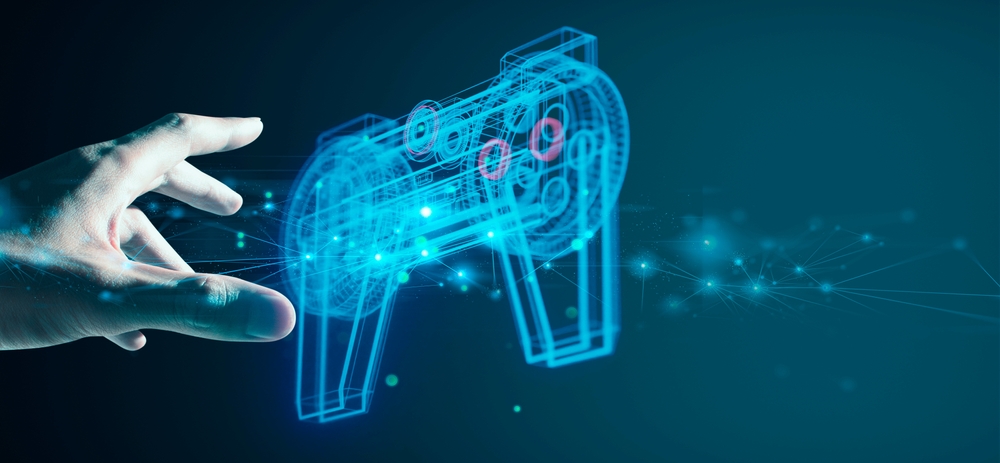The gaming industry is evolving at an unprecedented pace, driven by advancements in cloud technology, virtual reality (VR), and artificial intelligence (AI). These innovations are reshaping the way players interact with digital worlds, offering seamless access to games, deeply immersive experiences, and intelligent non-playable characters (NPCs) that react dynamically to player choices. As technology continues to push boundaries, gaming is poised to deliver more realistic, engaging, and personalized experiences than ever before.
Cloud Gaming: The End of Hardware Limitations
Cloud gaming is revolutionizing the industry by eliminating the need for expensive gaming hardware. Platforms like NVIDIA GeForce Now, Xbox Cloud Gaming, and PlayStation Now enable players to stream high-quality games directly to their devices, whether it’s a smartphone, tablet, or low-end PC.
- Instant Access to Games – With cloud gaming, players no longer need to wait for downloads or updates. Games are available on-demand, reducing storage concerns.
- Cross-Device Compatibility – Cloud services allow gamers to switch between devices seamlessly, picking up where they left off without needing powerful hardware.
- Reduced Latency and Improved Performance – Advancements in 5G technology and edge computing are minimizing lag, making cloud gaming a viable alternative to traditional consoles and PCs.
As cloud gaming infrastructure improves, more developers are optimizing their games for streaming, ensuring a lag-free, high-fidelity experience.
The Evolution of Virtual Reality Gaming
VR gaming has made significant strides, offering a level of immersion that was once considered science fiction. With more powerful headsets, realistic haptic feedback, and refined motion tracking, VR is becoming a staple of modern gaming.
- Wireless and Standalone VR Headsets – Devices like the Meta Quest 3 and Apple Vision Pro eliminate the need for external sensors and cumbersome wires, making VR more accessible.
- Haptic Feedback and Full-Body Tracking – Advanced haptic suits and motion capture technology are enhancing physical interaction within virtual worlds, providing a more lifelike experience.
- Social VR and Metaverse Integration – Games are no longer just about solo experiences. VR is integrating with metaverse platforms, allowing players to engage in shared virtual spaces and interactive events.
As developers continue to push VR boundaries, gaming is transitioning from a passive experience to a fully interactive digital reality.
AI-Powered NPCs: The Future of Interactive Storytelling
Artificial intelligence is redefining game narratives by creating NPCs that react intelligently to player actions. Gone are the days of scripted responses—AI-driven NPCs now learn, adapt, and evolve in real-time.
- Dynamic Conversations and Personalized Responses – AI-driven NPCs use natural language processing (NLP) to hold meaningful conversations with players, making each playthrough unique.
- Adaptive Gameplay Mechanics – Instead of predictable enemy patterns, AI enables NPCs to strategize and respond differently based on a player’s style.
- Procedural Storytelling – Games are moving toward non-linear storytelling, where AI crafts narratives that evolve dynamically based on player choices.
Developers like Ubisoft and Rockstar Games are incorporating AI to create living, breathing worlds that feel more responsive and realistic than ever before.
The Impact of AI on Game Development
AI isn’t just changing how games are played—it’s also transforming how they are created. From generating expansive open worlds to streamlining game development processes, AI is playing a crucial role behind the scenes.
- Procedural World Generation – AI-powered tools like Nvidia’s GANverse and Unreal Engine’s AI-driven procedural design allow developers to create vast game worlds with minimal manual effort.
- Automated Quality Assurance (QA) – AI-driven testing tools are identifying bugs and glitches more efficiently, reducing development time and improving overall game quality.
- AI-Generated Assets and Animation – Machine learning algorithms are generating realistic character animations, voices, and in-game assets, cutting production costs and increasing efficiency.
With AI enhancing the development pipeline, studios can focus on refining gameplay and storytelling rather than spending countless hours on repetitive tasks.
A New Era of Gaming Innovation
As cloud gaming eliminates hardware barriers, VR enhances immersion, and AI revolutionizes storytelling and development, gaming in 2025 is entering an exciting new era. These technologies are breaking traditional limitations, creating more engaging, lifelike, and accessible experiences. Whether through seamless cloud integration, deeply interactive NPCs, or fully immersive virtual worlds, the future of gaming is shaping up to be more dynamic than ever. Players can look forward to a gaming landscape where creativity and technology merge to deliver unparalleled experiences.

